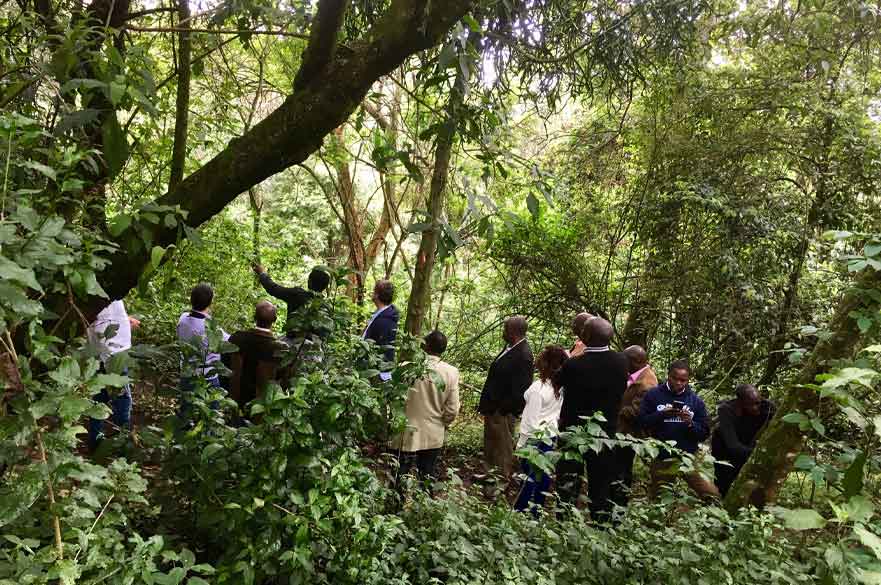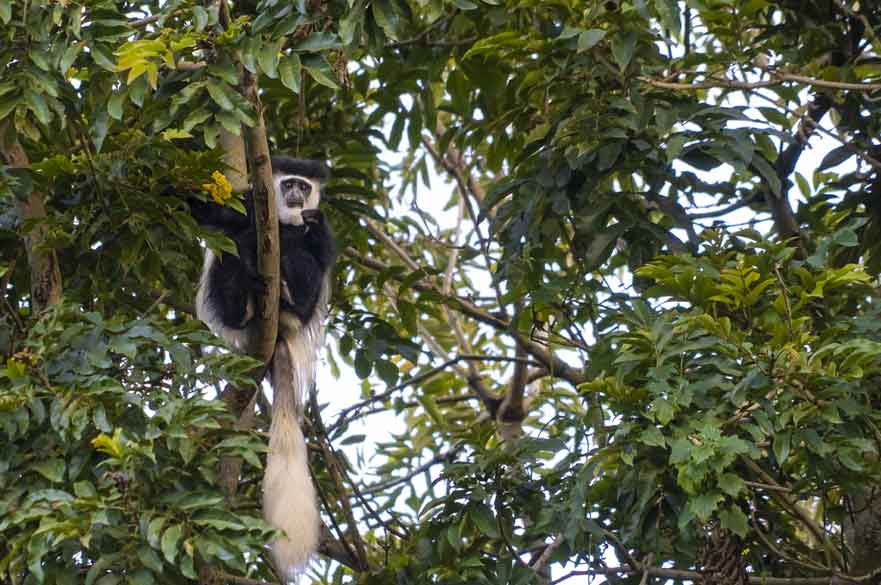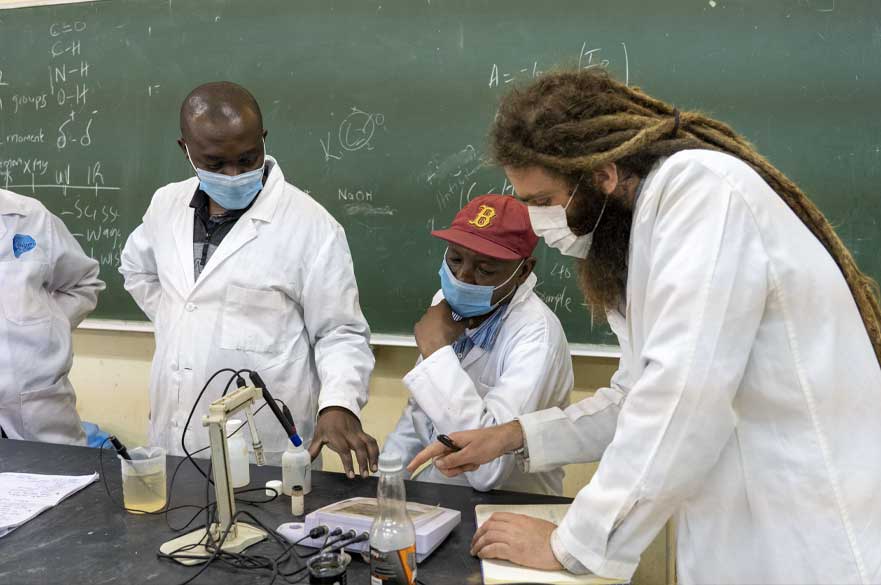Project: Kenya Ecological Restoration
Learn more about NTU’s collaboration with Kenyan partners on ecological restoration projects supporting sustainability and biodiversity.
Ecological restoration partnership
Brackenhurst Kenya | Nottingham Trent University | Jomo Kenyatta University of Agriculture and Technology | Mount Kenya University

The partnership between NTU, Brackenhurst Kenya, and the two local universities of Jomo Kenyatta University of Agriculture and Technology and Mount Kenya University was initiated in 2019. Key academics came together to discuss how they might collaborate to understand the value of Brackenhurst’s newly-grown indigenous forest.
Drawing upon their collective expertise a long-term plan of research has been drawn up to underpin the restoration of the site. Looking at all aspects of the forest to measure its success, its impact on the surrounding area, and the learning that can be used to inform future rewilding projects.
The team has set in motion a series of activities and opportunities for staff and students to engage in, and hope to establish a centre of excellence in ecological restoration in the future.
Brackenhurst Kenya's forest
The land surrounding the Brackenhurst Hotel had over the years become degraded as more and more invasive plant species moved in, seeding the land that was once cleared to make way for a golf course. The rewilding work undertaken by Plants for Life International, was not just to restore the land however, but was to use the site as a means to propagate and conserve native, endangered plant species.
The forest that grows there now is made up of entirely African trees and shrubs, many found on the International Union for Conservation of Nature (IUCN) red list. Invasive plants are routinely removed from the forest, in order to give the indigenous species the best possible environment in which to thrive. To date, the team have planted over 120,000 trees and shrubs spread over nearly 100 acres of land.

A forest is more than trees however, and the restoration has seen the return of many animals, birds and insects to the site. The forest’s flagship species, the Colobus monkey, returned to Brackenhurst in 2015 after an 80-year absence because their food source (leaves of native trees) is now available and the trees are tall enough to give them protection.
Other animals seen in the forest include bush babies, Sykes monkeys, civet cats, genet cats, white-tailed mongoose, black-tipped mongoose, African clawless otter, African hedgehog, porcupine and bush pig.
The list of birds visiting the site has increased form 30 in the year 2000 to over 180 recorded species in 2019.
Erasmus+ International Credit Mobility Scheme

In 2020, the Ecological Restoration Partnership successfully bid for Erasmus+ funding and were awarded a 36-month grant of €136,360 to support mobility between the partners.
This will be used to enable the partners to work collaboratively on their research projects, share expertise, evaluate the relevance of different approaches, and develop research protocols, leadership capacity and employability skills.